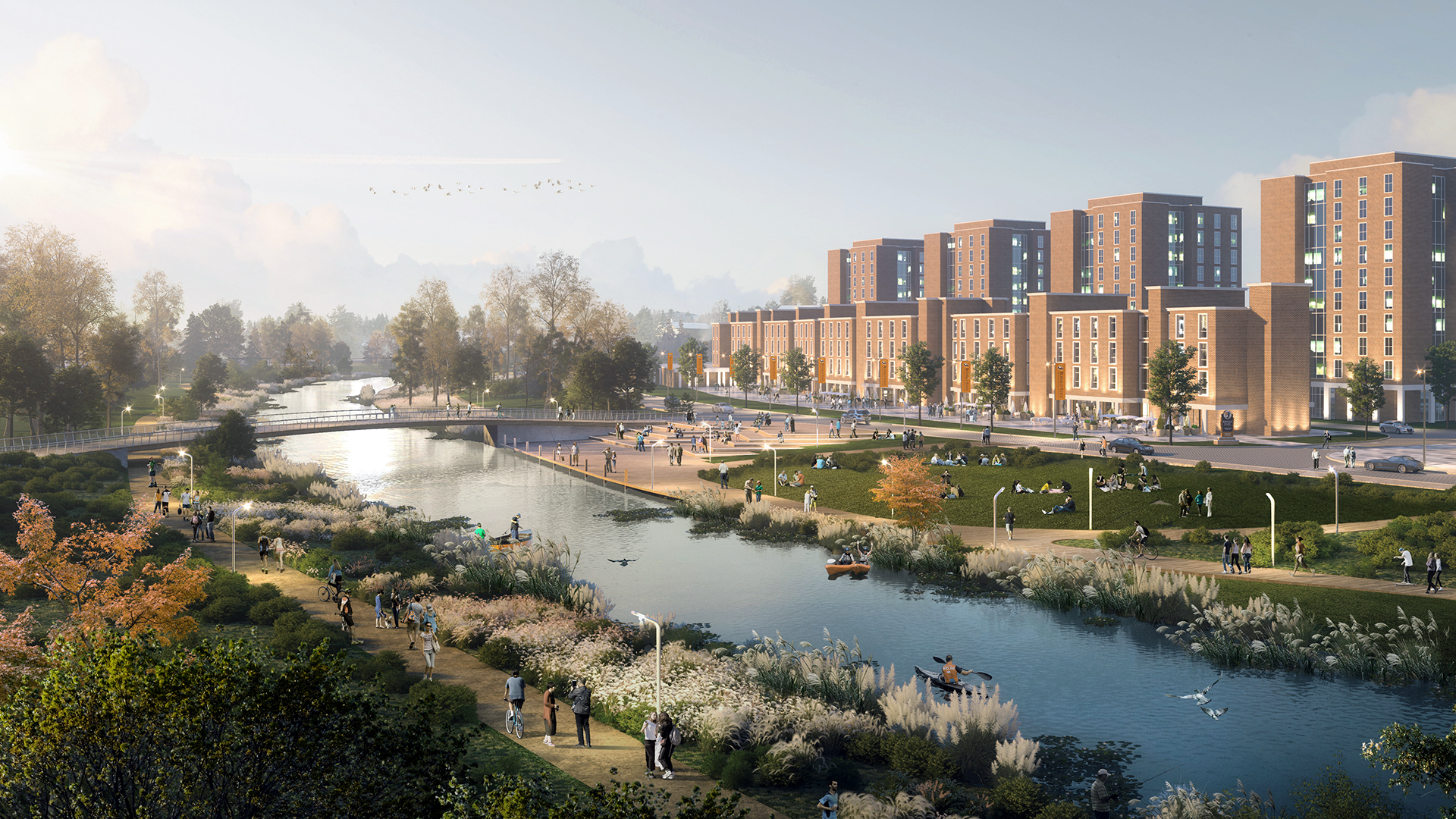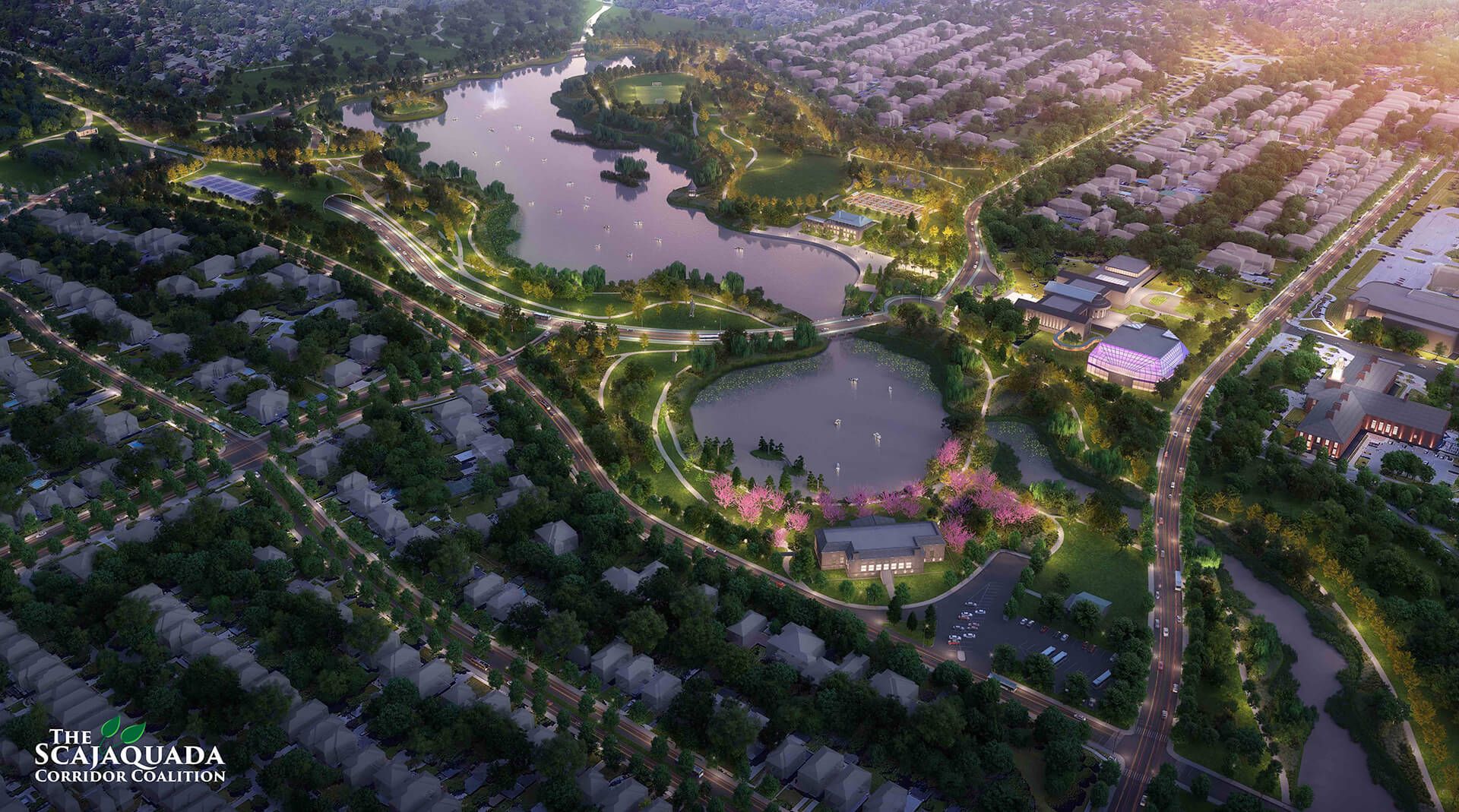Stephanie Geter, a Buffalo Native, once watched in real time as the Kensington Expressway completely refaced her neighborhood during its construction. A respected and honored member of the Buffalo community, Geter has since devoted herself to the restoration and repair of the damage she’s witnessed over her lifetime. Committed to the people as her first and foremost priority, Stephanie is at the forefront of communication with those who are directly affected by these issues and a voice for the changes they want to see. Still, plans of action and formal opinion aside in support of these efforts for Western New York’s future, hindering obstacles continuously emerge.
“You can’t talk about the Skyway without talking about all this other stuff,” said Terrence Robinson, a former member of the city’s preservation board, a statement that speaks volumes. This is, in fact, a change that has implications across a wide network, but through dialogue and cooperative planning they can be addressed. With a new federal bill at hand there has never been a greater time to begin implementing that change, which individuals like Stephanie Geter have been working so hard to realize.
When Stephanie Geter looks back at it, healing the wounds of the Kensington Expressway is really a lifetime cause. She was living on Lemon Street during construction, close enough for a childhood view of the bulldozers that leveled much of her neighborhood.
“We watched it get built,” said Geter, now 66, recalling how workers would tell onlookers “this was urban renewal” and the Kensington would make for a greater Buffalo. Instead, it destroyed Humboldt Parkway, a beautiful element in the vision of landscape architects Frederick Law Olmsted and Calvert Vaux, replacing it with a noisy, fuming valley through longtime city fabric.
At 66, Geter now chairs the Restore Our Community Coalition, dedicated to repairing what the Kensington (Route 33) stripped away. She has one main reaction to government plans to potentially remove the Skyway on the other end of town.
“The priority should be people,” she said, “and the priority has to stay the priority. Nobody lives by the Skyway. We have to restore a community that was almost killed, where the damage done by the 33 and the 198 are insurmountable.”
She sees a precedent in how a new state budget includes $800 million for a plan, a few hours away, expected to remove Interstate 81 from the heart of Syracuse. And Geter's sense of the Kensington as immediate concern was underlined in a recent letter of similar emphasis from Assembly Majority Leader Crystal Peoples-Stokes and five other legislators to Secretary of Transportation Pete Buttigieg.
Geter – noting how President Biden’s proposed $2 trillion infrastructure package intends to address communities of color harmed by rushed or thoughtless public construction – sees this as a critical, generational moment.
“If they want to do them both at once, we won’t oppose it,” she said of the Kensington and the Skyway. But the process, she said, cries out for conversation.
I spoke with a lot of people last week about the Skyway – intentionally steering away from elected officials – after my colleague, Mark Sommer, wrote a detailed update. The upshot had government planners leaning toward an option of shifting much of the traffic onto a 40-mph boulevard through South Buffalo, if the Skyway comes down.
Rep. Brian Higgins and state Sen. Tim Kennedy told Sommer their preference is an at-grade parkway – and that the scope of Biden's infrastructure bill could also allow for mending scars from the Kensington and Scajaquada.
For the moment, the question on the table is the Skyway, which ignites fierce yes-or-no emotion in Western New York. “It’s a cold, faceless, loud, polluting structure that blights the waterfront,” said Colin Nekritz, a talent strategist who wants it gone. “It seems counter to everything Buffalo ought to be in the future, a structure mired in pulling us backwards.”
The opposite perspective comes from Frank Kowsky, an architectural historian who has written about – and mourns – what the Kensington and Scajaquada expressways did to Buffalo. Yet the Skyway, he said, was designed by Edward Lupfer, the same guy who designed the Peace Bridge and Rainbow Bridge. Kowsky maintains it is among “the few pieces of modern engineering that are really beautiful.”
He argues the bridge, with its sweeping curve, is a gateway statement at the base of a Great Lake, and leveling it would be a reason for civic regret. His response, coupled with so many diametrically different takes, leads me to this request:
If you have thoughts on whether the Skyway should stay or go, email them to skirst@buffnews.com or write me in care of The Buffalo News, One News Plaza, 14240. If you can keep it under 150 words, all the better, and we will create a digital archive of responses.
The issue ignites a passionate array of voices, and this would be a chance to find them in one place. Rachele Schneekloth, a fifth-grade teacher, bumped into an Elmwood Village neighbor last winter at a store, where they shared their objections to taking down the Skyway. The moment inspired Schneekloth to launch a Facebook page called “The Skyway Club,” as well as starting a petition to keep the bridge as it is, while shifting civic emphasis toward matters of larger community need.
The page is open to respectful disagreement, Schneekloth said, and people who want the bridge to stay or go debate their points. Her "Facebook Club" has a range of followers, including children and grandchildren of three workers who died while building the bridge, united in a dream for a memorial to these “Skywalkers.” Schneekloth maintains addressing the Kensington “and helping actual people in an actual neighborhood” should be the priority. She sees the Skyway not as an ugly postwar relic but as a civic attribute. She envisions it open on weekend afternoons for runners, walkers and bicyclists to take in the sweeping view, and she said leveling it will generate more problems than it solves.
Beyond all else, she joins Geter in this reflection. Formal public input on removing the Skyway began in January of last year, only weeks before Covid-19 shut down the community. With transportation planners targeting a decision by year's end, Schneekloth said everyday women and men affected most by the plan deserve a more extensive and wide-open discussion.
“It’s as if we’re supposed to assume it’s happening, when we ought to be asking 'What’s the best thing for our city, as a city?' ” she said. “Wait a minute. What about a conversation?”
Jay Burney is among those who signed on to Schneekloth’s Skyway Club, though he said his concern is less the bridge itself than the consequences of whatever might replace it.
The longtime environmentalist has put years of efforts into sustaining the Times Beach Nature Preserve, and he worries vehicular alternatives to the Skyway, as presented now, will harm precious wetlands, put environmental stress on the fragile Tifft Nature Preserve and lead to new construction injurious to the "critical ecological resource" at the Outer Harbor.
“My priorities are to protect Tifft," Burney said, "and not to enhance development out here.” He wants those concerns addressed in an ironclad way, and he said that demands - above all else - "an appropriate community discussion” of environmental and social justice questions.
Tim Tielman, executive director of the Campaign for a Greater Buffalo, maintains his organization has a way to thread the needle. This week, he will unveil a more expansive version of a “Cloudwalk” that would save about 80% of the Skyway as a giant piece of parkland, including the great curve revered by Kowsky and others who admire the bridge. The campaign describes the updated plan as “The Big Picture.” It calls for removing the pretzel of concrete where the Skyway meets Interstate 190, Tielman said, thus allowing for the revival of Terrace Park – which he described as Buffalo's original park, a beloved area blown away when the Skyway went up.
There is a chance, Tielman said, to reconcile the realm of disagreements throughout the community – a case he will make this week in the announcement. As a child, Terrence Robinson played touch football on what is now the concrete footprint of the Kensington. He saw the damage it did to the Hamlin Park neighborhood, and he hopes the entire community might see the larger question in this way:
“This has to be holistic,” he said. “You can’t talk about the Skyway without talking about all this other stuff.”
Robinson, a former member of the city’s Preservation Board, likes the idea of some version of the Cloudwalk. But he said the sweeping nature of the infrastructure bill ought to immediately make the Skyway only one piece of urgent civic dialogue on all the wounds from postwar highway construction – including, for instance, another look at riverfront portions of the I-190, which basically wall off the city from the Niagara River.
“This isn’t just once-in-a-lifetime,” Robinson said of what the federal bill could mean. “It might be a once-in-two-or-three-lifetimes moment.” With that in mind, with the clock ticking, he looks toward a conversation.



